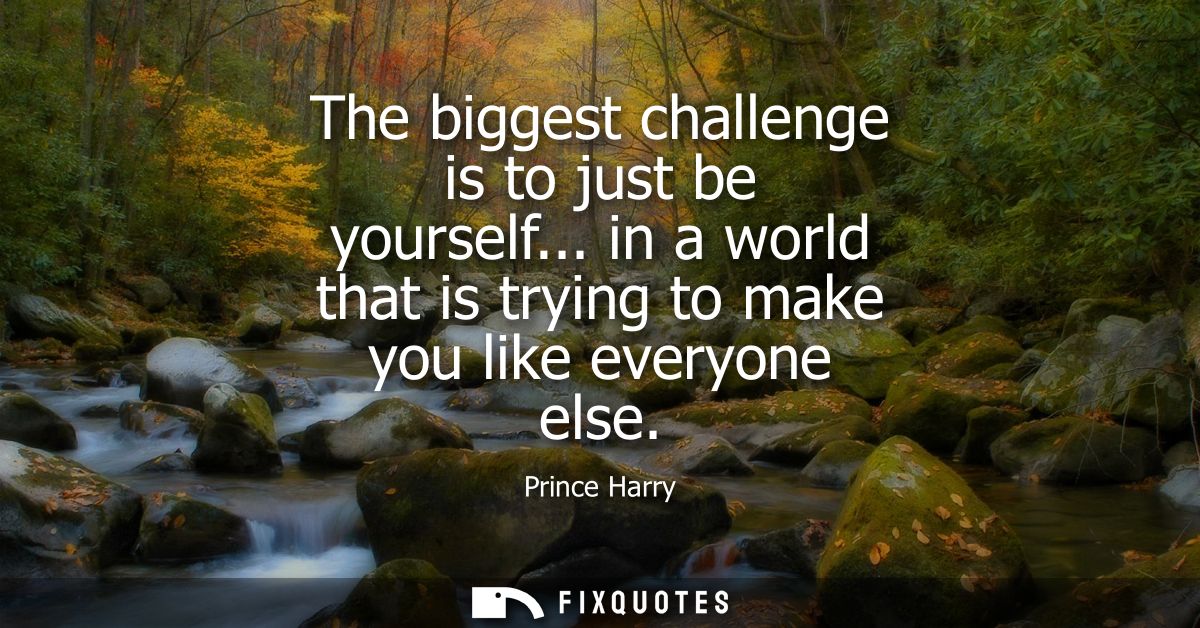"The biggest challenge is to just be yourself... in a world that is trying to make you like everyone else"
About this Quote
Being yourself sounds simple, yet it demands steady courage. From childhood onward, families, schools, and workplaces signal what is acceptable, rewarding the familiar and discouraging what feels strange or inconvenient. The pressure intensifies in the digital age: algorithms reward sameness, trends cycle faster than reflection, and a curated self can seem safer than an honest one. The cost of going along is subtle at first, small compromises, muted preferences, unvoiced dissent, until the person in the mirror feels like a product of consensus rather than a lived, breathing life.
Authenticity is not stubborn nonconformity or performance. It is alignment: values, words, and actions pointed in the same direction across contexts. That alignment often conflicts with the desire to be liked or to belong, which is why it qualifies as a challenge. The stakes are real. Standing apart can bring criticism, misunderstanding, or loss of status. Yet the alternative extracts a quieter price: pervasive anxiety, burnout from maintaining a persona, and relationships built on partial truths.
The way through begins with attention. Notice what energizes you and what quietly drains you. Name the fears, rejection, failure, ridicule, so they shrink from vague threats into manageable risks. Start small: speak honestly in one meeting, wear the thing that reflects your taste, decline the commitment that betrays your priorities. Authenticity compounds through tiny acts of integrity. Seek communities that prize difference, not as novelty, but as the raw material of collective strength. Belonging should not require erasure.
These words resonate especially coming from someone born into an institution built on ritual and expectation. They acknowledge that privilege does not cancel pressure; it often refines it. The invitation is universal, though: craft a life shaped by conviction rather than compliance. The world will always offer templates. Choose to use them as tools, not cages, and let your singular pattern emerge, imperfect and unmistakably your own.
About the Author

